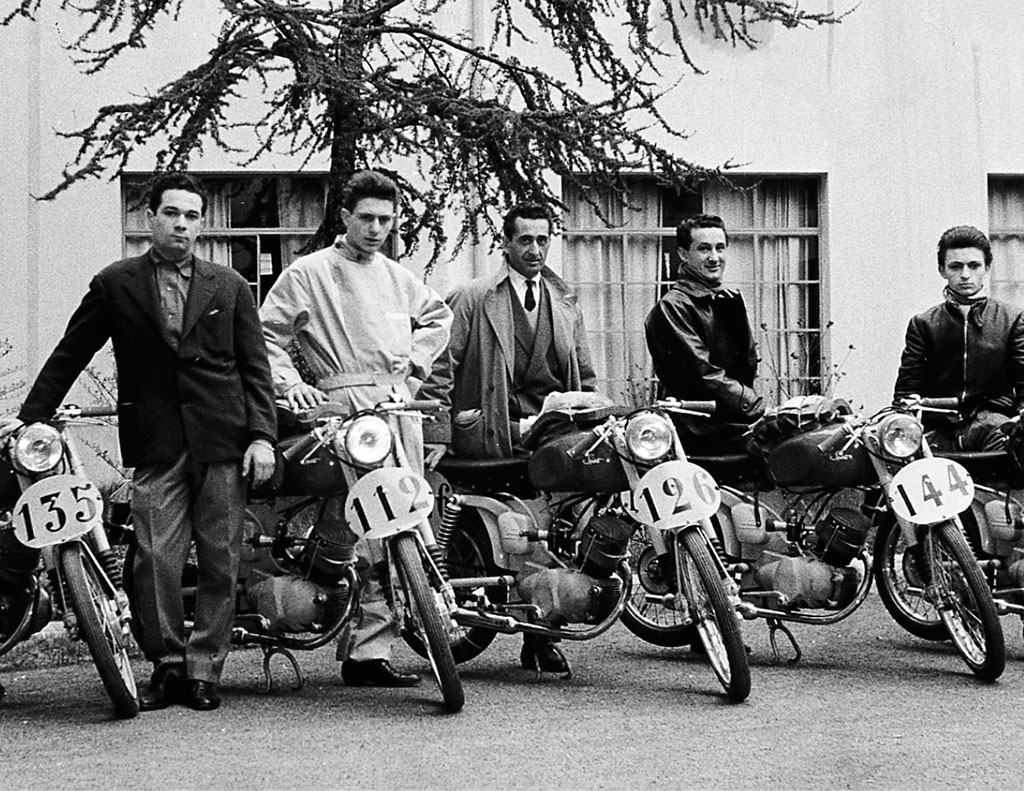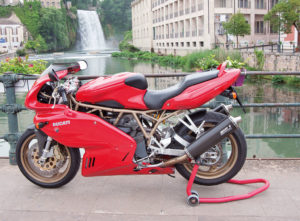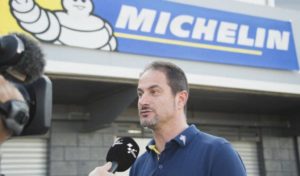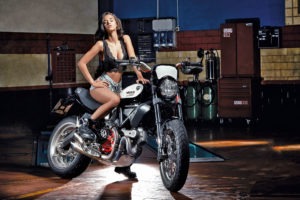In telling the story of Ducati we often come back to mention the usual and famous names of those who actually wrote the most important pages of this incredible Italian epic: next to them, however, they played an important role characters that we cannot consider minor, as their role in the success of the Ducati brand was, if not as much, at least very significant , but which are not as well known. In this article, therefore, we talk about the mechanics who most distinguished themselves in the preparation of Ducati motorcycles, those of the racing department who worked under the ordersof Ingegner Taglioni.
Most of these are also remembered in the role of rider such as Franco Farnè,or flying support driver, such as Recchia, Scamandri, Alberto Farnè, Malaguti and others who have written precisely the history of ducati sport. rider
But there were also mechanics who never ran, even though they tried the bikes they had built within the department from time to time.
One of them was Renato Armaroli,who, in addition to being an excellent mechanic, was also a successful designer so much that he made a 500 grand prix that won important results. The bike, which used transmission belts,a detail that Taglioni at the time hated for their initial fragility, was perfected with the supervision of Taglioni himself and had interesting developments also thanks to Read who carried it on the circuits. Armaroli, as mentioned, also did not play the role of test driver and did not compete in the competitions of the time.
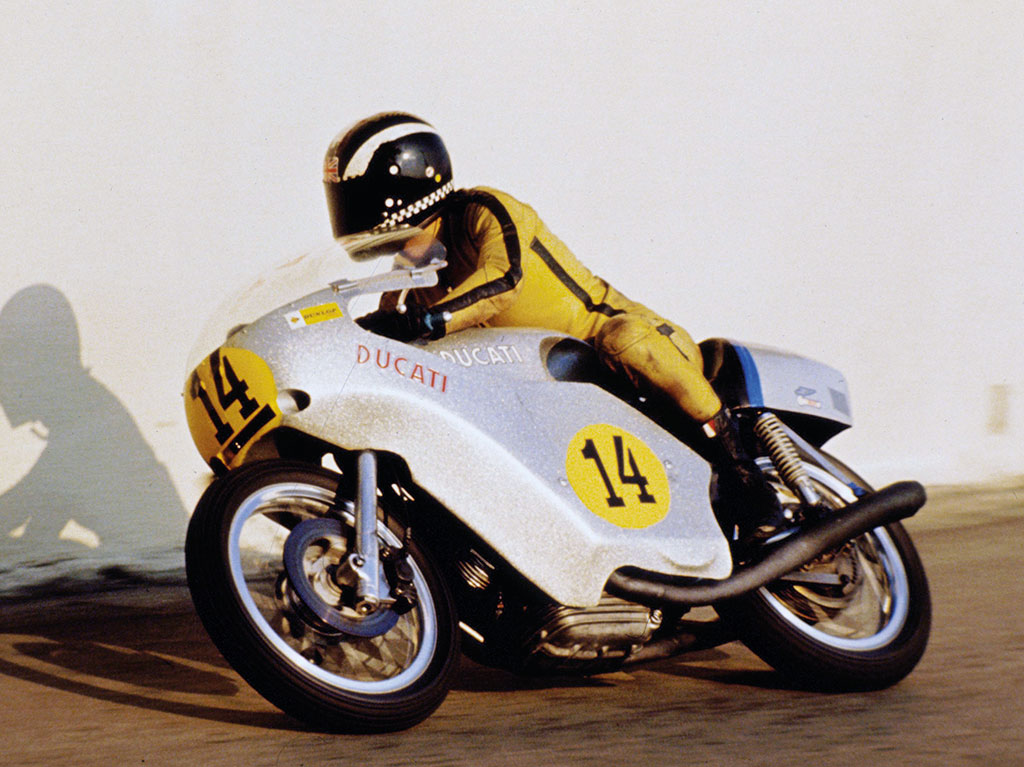
RENATO ARMAROLI
He was born in Bologna on May 24, 1933 and since he was a child he has been passionate about motorcycles. The first approach by means of competition had him in the dealership of Leopoldo Tartarini,who also managed his own Ducati racing team, in which some Bolognese drivers converged.
The initial contact with Tartarini took place in the 1950s, even before Poldino became rider Ducati driver.
In those years, Tartarini’s father ran racing Moto Guzzi and the young Armaroli was fascinated by Guzzi engines that could be equated with today’s Ferraris for fame and interest in mechanics and enthusiasts.
It was precisely to observe the Guzzi engines up close, and discover the secrets, that Armaroli, at just 14 years old, began to attend the workshop and the Tartarini dealership: he found himself in the most important center of Bolognese motor life and has not come out of it since. From Tartarini’s workshop, Armaroli moved to Mondial (obtaining as liquidation two tuts used with the words Guzzi) and there he grew further as a mechanic operating on the commercial line, but also on race engines.
In 1957, he set foot for the first time in Ducati, thanks to his knowledge with engineer Taglioni, where he remained until 1961; then, due to the downsizing of the sports programs of the Borgo Panigale brand, it passed to Benelli. At Ducati he helped to realize and develop the 125 that have made the history of the WorldChampionship, led by Hailwood, Ferri, Gandossi, Taveri, Chadwik.
In Benelli he remained a few years, then, from 1964 to 1969, he flew to Spain together with other former duchies: at the Mototrans of Barcelona, in fact, realized a 285 cc (it was a 250 increased) which dominated in Spain with Swagger and Mandolins,while in the 125 gave the winning bike to the future world champion Angel Nieto.
In 1972, he was on the verge of returning to Ducati, called by the then general manager Spairani,who wanted to revive the racing department, but at the last moment nothing was done because he understood that the situation was very different from that in which Taglioni’s jewels were born.
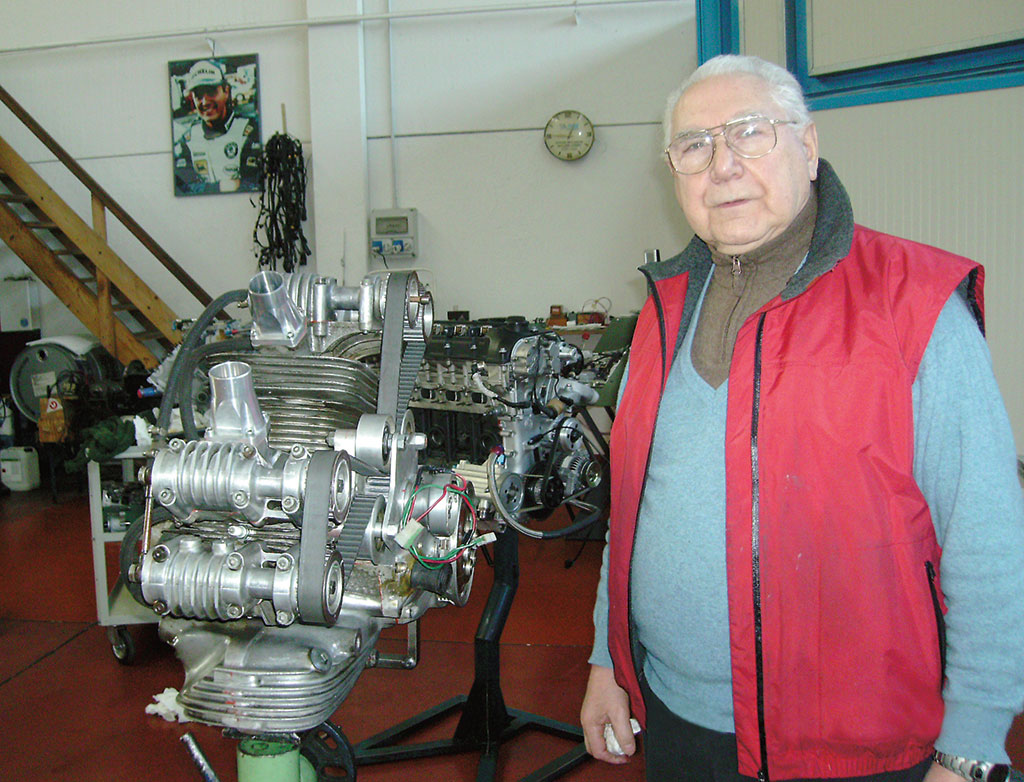
He worked as an external collaborator, creating a 500 twin-cylinder without the conical pairs that gave excellent results to the bench, but did not have a future on the track; the engineer Taglioni in fact did not like the fact that it worked using transmission belts.
Taglioni hated them and carefully avoided them because he considered them unreliable: partly he was right, because, until the transmission belts had reached absolute levels of reliability, many races were lost precisely because of their loss.
Armaroli’s 500 was a two-cylinder, 4-valve cylinder that delivered 75 horsepower. Although it did not have the developments that was hoped for, it still contributedto the Ducati affirmation in Superbike,because Lucchinelli’s bike we can consider, in part, daughter of the 500 designed and built by Armaroli.
As an external technician, Armaroli then collaborated with Ducati,operating in his own workshop founded together with his brotherly friend Negrini:since then, Armaroli has abandoned his bikes and dedicated himself exclusively to racing engines for cars, obtaining excellent results in prototype sports races.
OSCAR FOLESANI
Born in Monte San Pietro, a few kilometers from Bologna, on November 6, 1924, as a child he attended the workshops that were near the house where bicycles and motorcycles were adjusted.
After various work experience, in 1943 Oscar was drafted into the Navy, making 28 months of war on board the destroyer “Fortunale”.
As soon as he is discharged, he finds a job at Ducati,in the tooling department:after some time he moves to the Central ResearchDirectorate, where he can finally give vent to his inventiveness. It is at DRC that he has the first contact with racing bikes, because in the same period Ducati begins the production of the Puppy.
He works alongside racing mechanics, such as Pedrini and Recchia,who do the first elaborations, just by empowering the Puppy. Folesani also lives the adventure of the Cruiser, scooter 175 cc four times,very advanced as a conception, but that had no luck.
In those years, Ingegner Taglioniarrived at Ducati, exiting mondial, and Folesani found himself working first on the 100 single-tree cams in the lead,then at the 125 desmo that will make history in the Grand Prix motorcycle racing. When Ducati, in 1958, decided to provide some racing bikes to Mike Hailwood, Folesani is chosen as the trusted mechanic of the English ace: he was entrusted with the management of the means in the three months of races in England and Europe, which Hailwood played with his Oxford Castle as a technical basis.
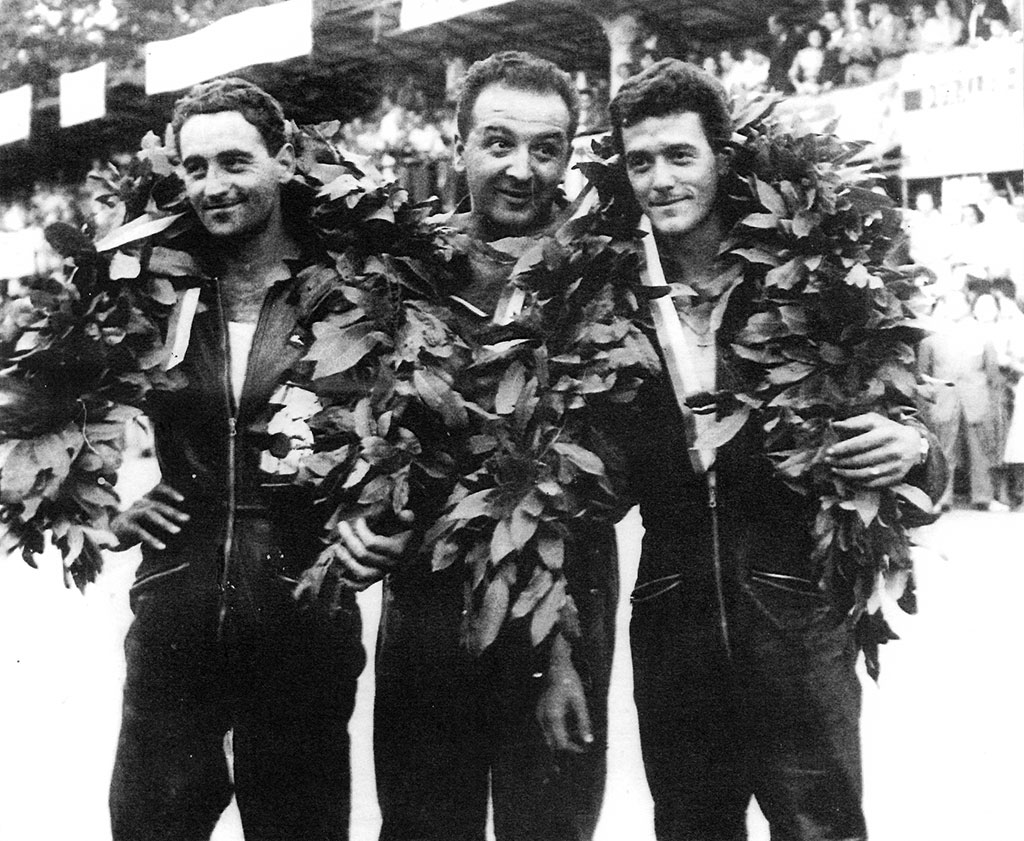
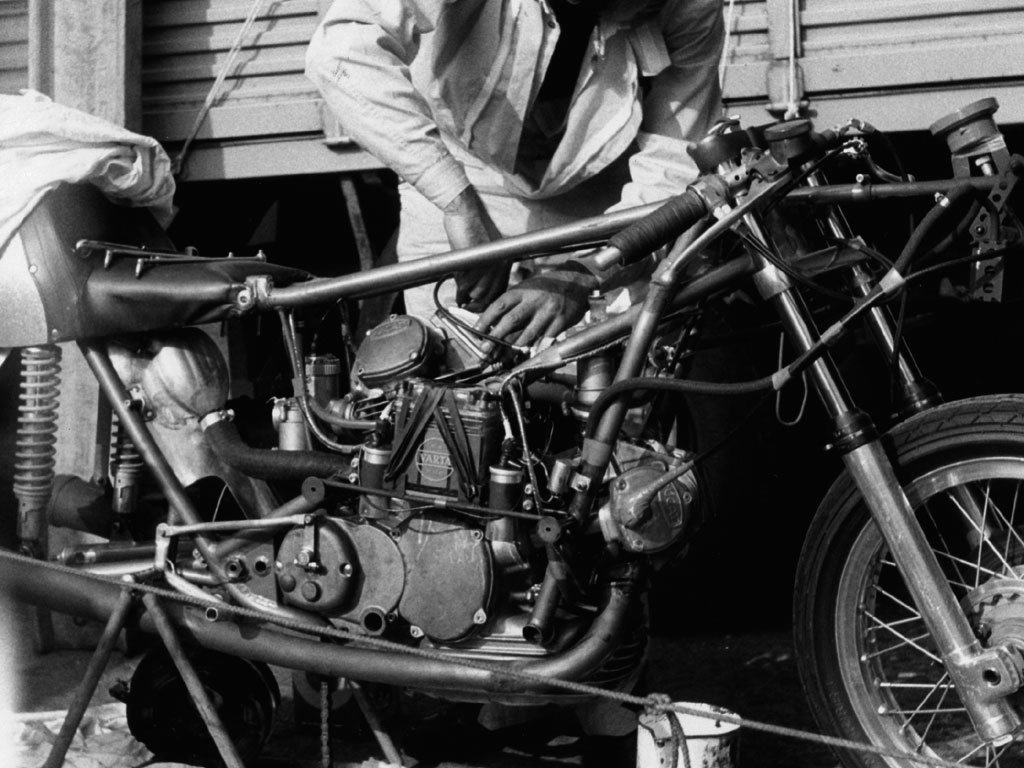
He also participated in all five editions of Motogiro:in the first he competed with a Puppy 73 cc,in the second with a 98,in the third with a 100,in the fourth and fifth with a 125; these were always experimental bikes that were entrusted to him by the company.
Folesani, at Oxford and also on the various circuits, has almost always worked alone, on some rare occasions flanked by Recchia and Armaroli,as on the occasion of the Tourist Trophy in which Hailwood competed inall classes : in the 125, 250 and 350 on Ducati, in the 500 with norton.
The first year he ran with the 125 single cylinder and then move on to the two-cylinder desmo which was then sold to other ridersducati, at the request of Sir Stanley Hailwood, built specially for his son Mike a 250 cc desmodromic twin that was unrivalled and cleaned up titles in Britain.
The further step forward was the realization of a 350 cc, obtained by pairing two 175, which, after an initial use by Hailwood, was sold to Ken Kavanagh, an rider driver who thanks to it dominated the home championship.
In 1959, in a parenthesis of his engagement to Hailwood, Folesani was also shipped to the United States; had been explicitly requested by importer Berliner because he knew English well.
Folesani closed the Hailwood bracket (from 1958 to 1961), because Mike moved to MV with which he won his first world title.
Back in Borgo Panigale, however, he stayed there a few months, because he was diverted to the “triumph program” which involved the import of such cars into Italy: this type of work he did not like and so he decided to move to the ATS,a newly formed F1 team, which was based in Bologna, but soon withdrew due to lack of funds and internal disagreements.
After many years of work, and collaborations also with Malanca, having reached the necessary years, Folesani preferred to retire to devote himself entirely to the family, which until then he had neglected.
The passion for mechanics, however, never abandoned him and as long as his health allowed him to build and modify motorcycles and cars in a friend’s workshop in Sasso Marconi. Folesani disappeared at the end of 2016.
Mike Hailwood’s Bike
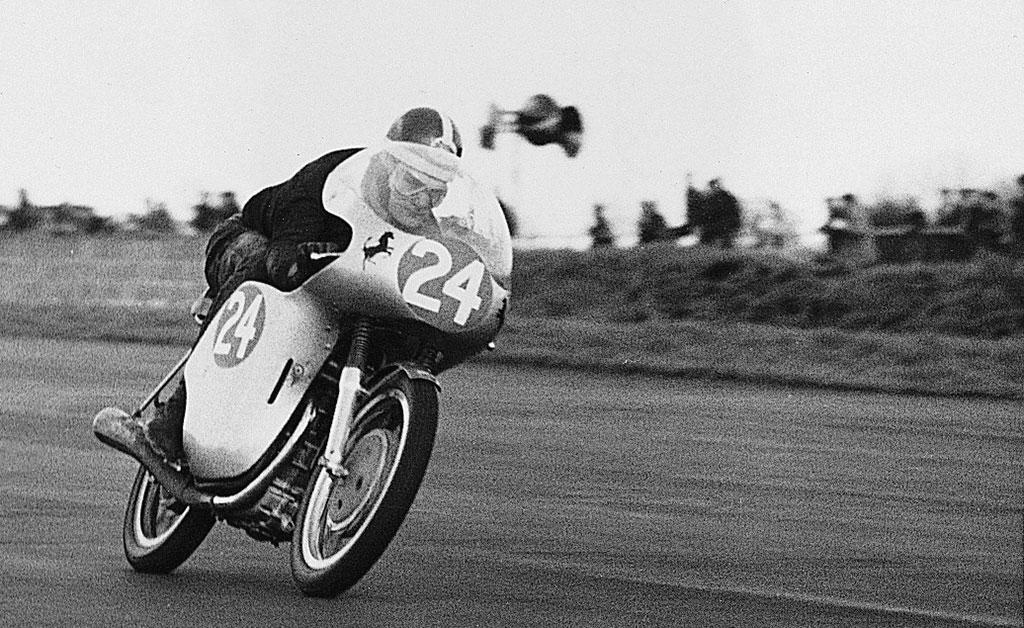
A parallel 250 twin-cylinder was specially made by Ducati for Mike Hailwood and purchased by Stan Hailwood in the early 1960s. It must be specified that at the time Ducati was a state-owned company and the decision had been taken not to participate directly in the competitions. So when Stan Hailwood came to buy a racing bike for his son, he was told that it was not possible to please him, because there was no racing department.
Then Stan paid out of his own pocket for the design, construction of the bike, the race team, the truck and even claimed two Ducati mechanics, one of whom was Oscar Folesani,historical mechanic of the Bolognese company. The 250 twin-cylinder was used by Hailwood a few years ago and then sold to John Surtees.
The bike built for Hailwood features a twin-cylinder overhead cam shaft engine driven by a cascade of straight-tooth gears, with 55×52 mm reaming/running measurements.
The clutch is multiple discs with oil bath and the gearbox is six-gear with barbell control on the right side. This engine provides a shaft power of as much as 43.3 Hp (i.e. a specific power of 173.2 Hp/l) which corresponds to 37 Hp per wheel.
The maximum rotational speed is 11,000 rpm and the maximum torque is reached at 10,800 rpm. The frame is double cradle in tubes whose upper beam divaricated at the saddle.
At the front we find a Norton fork and the rear shock absorbers are Girling. The drum brakes are Oldani double cam in sizes: 220 mm the front and 200 the rear. The circles, as in the use of the time, are 18 inches (also by Borrani).
This machine – very powerful for those times – was able to reach 215 Km/h thanks also to the low weight of only 130 kg in running order.
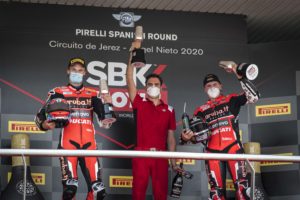
SBK a Jerez: avanti tutta!
A Jerez de la Frontera, seconda tappa del campionato SBK, si ri-accende lo spettacolo con Ducati protagonista. Doppietta di Redding e secondo posto in gara 2 per Davies.
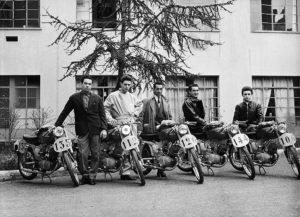
Il mito dei velocissimi meccanici Ducati
La storia di un gruppo di meccanici che hanno saputo sacrificare le proprie aspirazioni personali, sul piano agonistico, al bene del team.
SILVIO MALAGUTI
Born in Crevalcore, in the province of Bologna, on June 26, 1926, he died in March 2007 in Granarolo, a town in the Bolognese hinterland.
He was one of ducati’s faithful, having spent his entire working life between the Borgo Panigale plant and many other parts of the world as a technical representative of the brand at the major world fairs, ending his career abroad as head of the Portugal headquarters.
At Ducati he arrived as a boy, in 1942, as a bellboy, with hourly pay of 0.75 lire an hour! Malaguti’s restless soul immediately proved to be and led him to rotate in many sectors of Ducati; as a delivery man, he passed within a few months first in the foundry then to the return sector; at the end of the war, after contributing to the reconstruction of the factories, was destined for the puppy’s rehearsal room whose production had just begun.
Together with Mario Recchia he was the first to try and compete with the Cucciolo in the competitions of great importance in the role of flying mechanic:his first success caught him in Casalecchio di Reno, in 1950, with a Ducati 60.
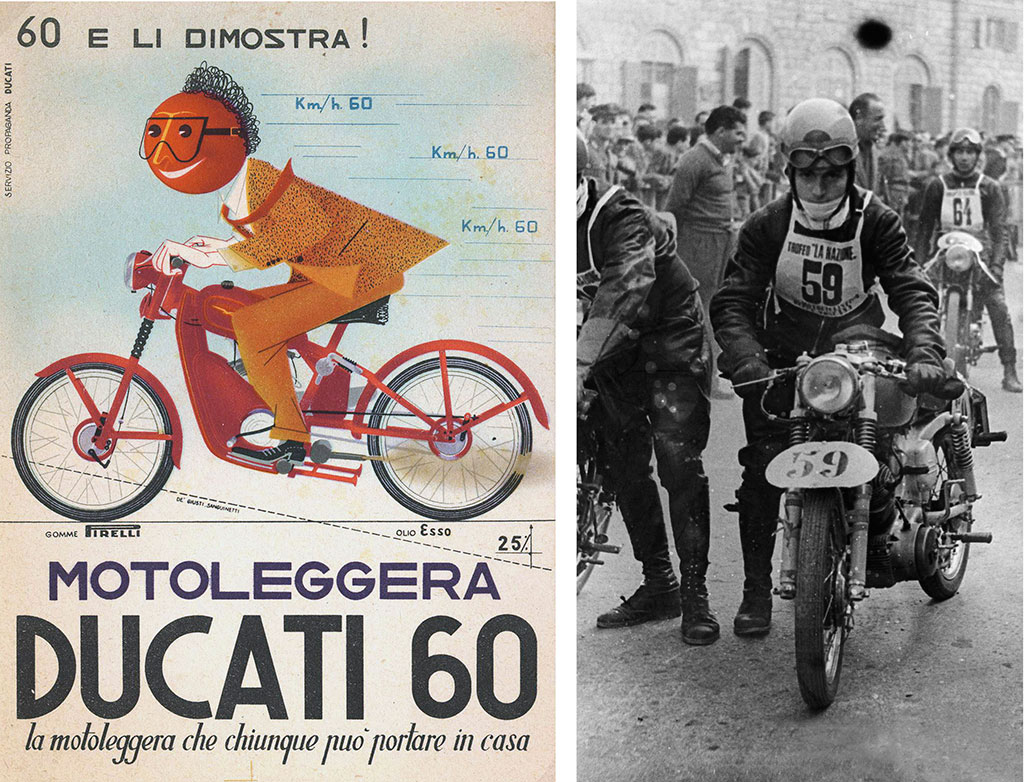
In the experience department he remained until 1958, realizing and bringing to the race, after the Cucciolo, the 75, the 98, the 100 and the 125 and in Portugal also Formula 3 as well as having done comparative tests with the 250 and 350.
In 1956 he participated in Motogiro in the class of 125 sport,finishing in 12th place and in 1957 he was sixth in class 100 on a Formula Two.
From 1958 to 1962 he was technical manager of the Portuguese branch based in Lisbon and also contributed to the opening of Mototrans,an importer and assembler in Spain of Ducati products, which was based in Barcelona.
Returning to Bologna in 1962, he traveled the world bringing Ducati products to all fairs, also working in the marine engine department.
In 1982 he retired, but he continued to take an interest in motorcycles also creating scale models with which he further refined his mechanical experiences.
His competitive activity is full of important results,among which stands out the victory in the 24 hours of Montjuich in 1956,his golden year, which saw him fifth in class also at Milan-Taranto.
MARIO RECCHIA
He was the king of the DucatiPuppy, with whom he won many races, from 1946 onwards, riding the 48 cc. Ducati employee, he worked in Borgo Panigale for almost 40 years, initially in the racing sector together with the engineer Taglioni, then as head of department.
He also raced the Motogiro in the role of flying mechanic. The most valid results over long distances caught them on the Puppy in the various displacements: 48, 73 and also with 98 cc.
But Recchia’s most important success was his competitive debut, for him and the Cub, on November 1, 1946, when he conquered the jersey of emilian champion:this was the first title won by Ducati,to which Recchia then added many others, also trying his hand at regularity, without however obtaining significant results.
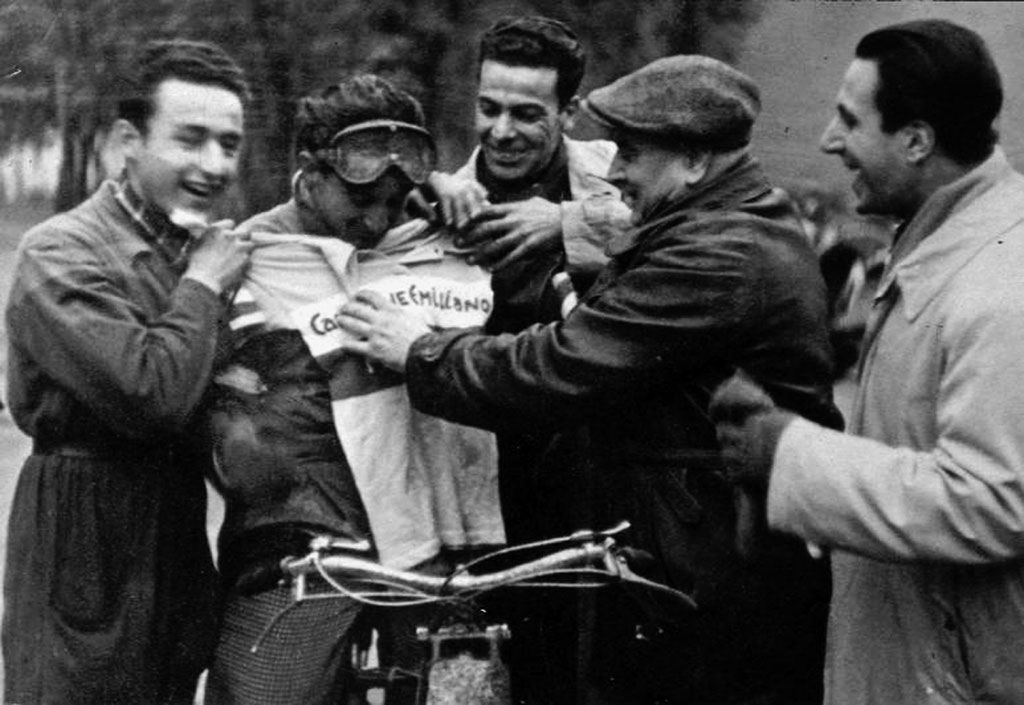
A great mechanic, he was together with Caracchi and Nepoti one of the pillars of the NCR,a team that took care of ducati engines in Superbike (before the official entry of the Ducati racing team), passing later to assist private individuals.
He had the satisfaction of traveling all over the world working in the box of mythical champions such as Hailwood, Spaggiari, Gandossi to whom he provided engines tailored to their respective needs.
When he first set foot in Ducati, Mario Recchia could certainly not have imagined that his entire professional life, but not only that, would be linked to the house of Borgo Panigale and its bikes.
In the more than 40 years in which he has had to deal with Ducati, from worker to head of production lines, finally as an external technician with close contacts with the parent company, Recchia has helped to write the history of Ducati.
Mario Recchia died in Bologna on July 8, 2006.
ETTORE SCAMANDRI
Very good mechanic, but above all great tester and driver,Ettore Scamandri not only materially built the racing bikes in the racing department of Borgo Panigale, but also took them to the race achieving excellent results: if he had not had the task of assisting riders pilots he would certainly have centered even more qualifying placements.
He was known in the Bolognese motorcycle environment as “the grandmother” or “the oldwoman “, for his resigned appearance and bombproof tranquility.
He was very experienced and good at endurance races,thanks to the experience made in Ducati as a test driver: he won the Imola Gold Cup in 1959 in the class 125,was first in 1957 in the Trento-Bondone with a 125, sixth in the final ranking of the 100 cc at the Motogiro of 1955,tenth overall and fifth in class in the 100 cc at the Motogiro of 1956.
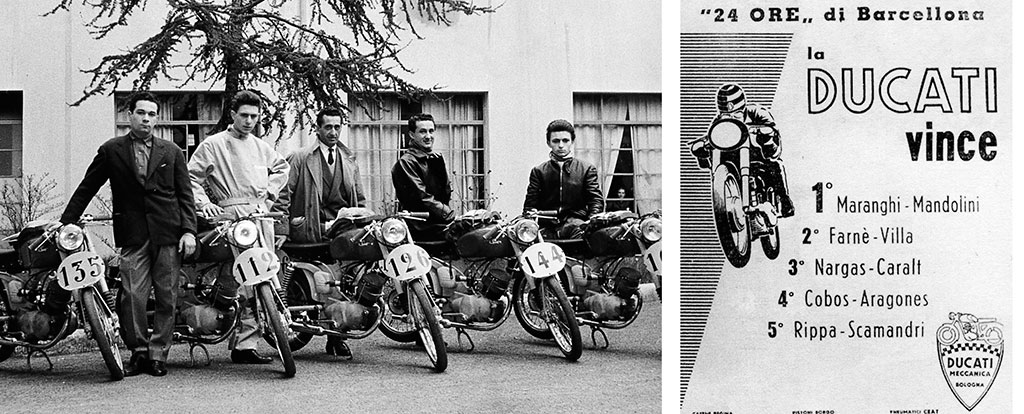
In 1962 he finished third in class with a 125 in the Shell Gold Cup in Imola and at the end of the season finished in second place the Italian senior league class 125.
He was also one of the protagonists in the Mototemporada Romagnola on the circuits of Cesenatico, Milano Marittima, Riccione and Rimini in the 60s.
As mentioned, in the great background competitions he lost interesting chances of affirmation precisely because he had to make the emergency intervention in favor of some colleagues of the official Ducati team who ended up in a state of dispersa. Together with Franco Farnè,in September 1957, he was the initial escort (up to Trieste) to Tartarini and Monetti who faced the World Tour on the Ducati 175.

SBK a Jerez: avanti tutta!
A Jerez de la Frontera, seconda tappa del campionato SBK, si ri-accende lo spettacolo con Ducati protagonista. Doppietta di Redding e secondo posto in gara 2 per Davies.
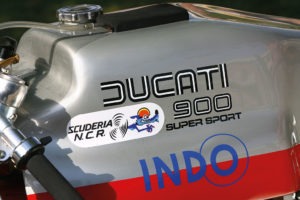
Scuderia NCR: quando non esisteva Ducati Corse
NCR è senz’altro uno dei marchi più conosciuti dai ducatisti, presente per anni nelle competizioni, ma anche su molte special

